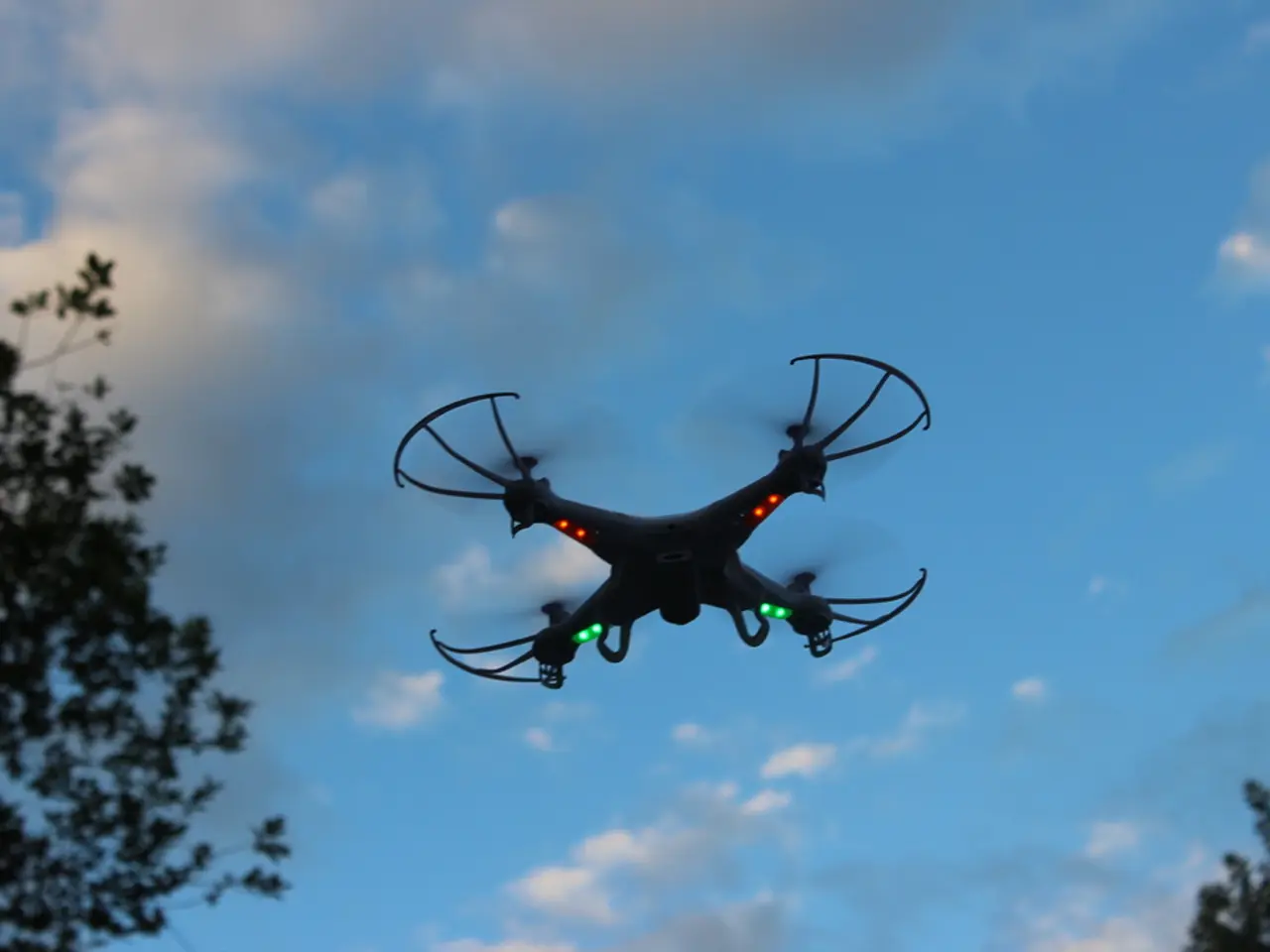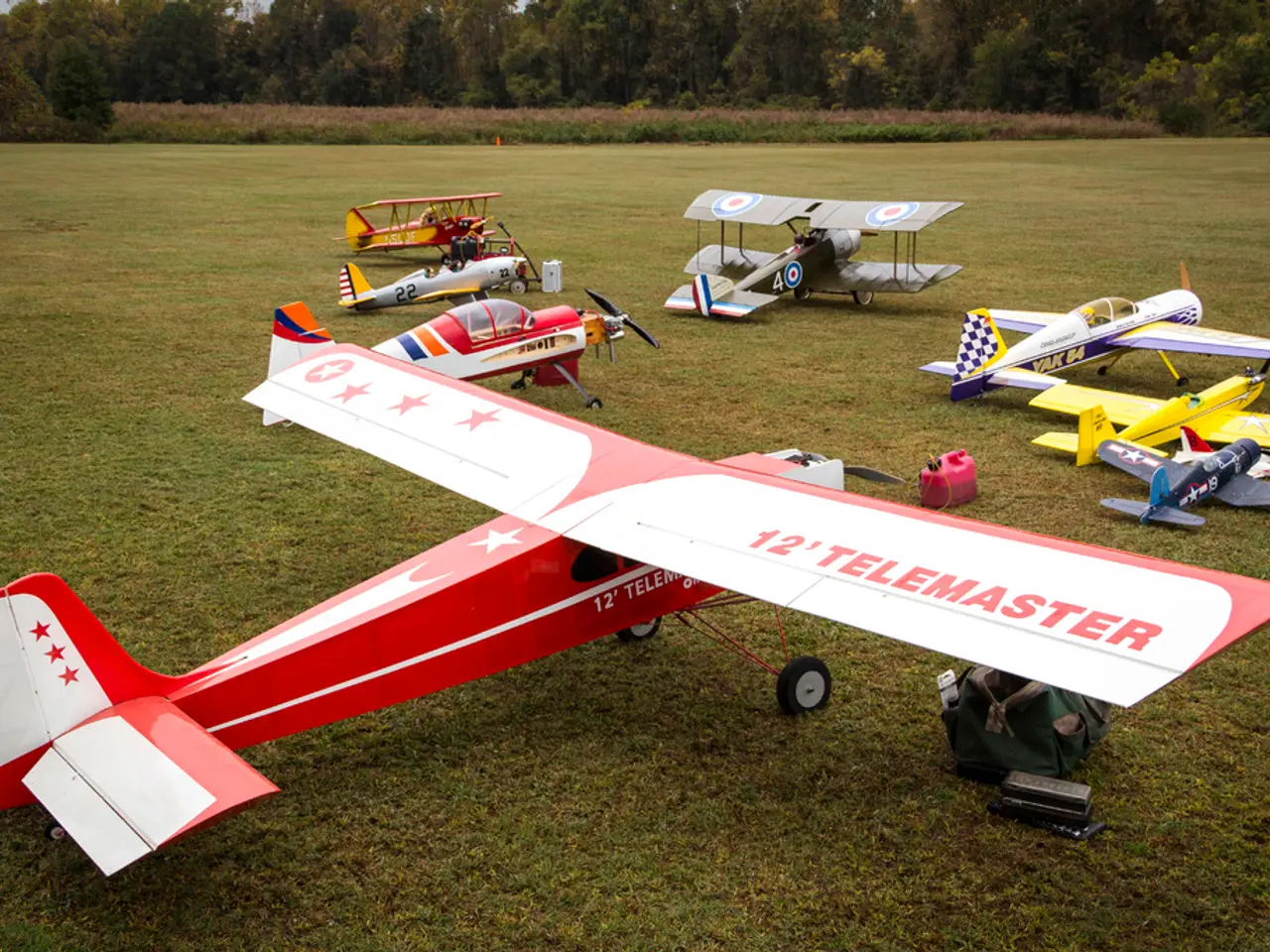Aerial Surveillance with Thermal Drones: Unveiling Discoveries Made
==================================================================================
Thermal drone inspections are revolutionising the way industries approach preventive maintenance, offering faster, safer, and more cost-effective solutions for detecting issues such as heat leaks, electrical faults, or material degradation.
These drones can detect heat loss and insulation defects, electrical hotspots, water intrusion and moisture, equipment overheating, and even human and animal heat signatures [1][2]. By providing a high-resolution thermal map from above, they enable rapid assessments of large or hard-to-reach areas without the need for scaffolding, ladders, or physical contact [1].
Key benefits include safety improvements, time and cost savings, high accuracy and repeatability, wide applicability, and operational efficiency.
Safety Improvements
Thermal drones eliminate the need for human inspectors to enter dangerous environments, such as high structures, unstable buildings, electrical installations, and other hazardous areas. This greatly reduces the risk of accidents or injuries [1][3].
Time and Cost Savings
Inspections that once took days on foot or required significant manual labor can now be completed in hours. Faster detection means addressing issues before they worsen, boosting efficiency and reducing downtime [1][2][3].
High Accuracy and Repeatability
Thermal drones can capture every inch of a structure without blind spots and enable repeatable, benchmarkable inspections over time for monitoring asset health [2].
Wide Applicability
Industries such as energy (e.g., wind turbines, solar farms), manufacturing (e.g., fire and leak detection), construction (e.g., dam inspections), and supply chain logistics benefit from thermal drone inspections thanks to their ability to monitor thermal anomalies, structural defects, or other irregularities that are invisible to the naked eye or regular cameras [1][3][5].
Operational Efficiency
Drones can perform continuous or scheduled monitoring without interrupting ongoing activities, improving overall operational flow and asset management [3].
In various industries, thermal drone inspections have found wide adoption. They are used in solar energy, construction & building maintenance, oil & gas, agriculture & forestry, and emergency services & search and rescue [1].
A case in point is a renewable energy provider in southern Ontario, which used a thermal drone inspection to assess panel performance in a 50-acre solar installation. The thermal drone inspection identified several hotspots across four arrays, indicating failing bypass diodes and overheating connectors. This saved thousands in lost energy revenue [1].
It is important to note that operators of thermal drones typically require a drone pilot certificate or license, and flights may be restricted near sensitive areas or critical infrastructure [1]. Choosing the right thermal drone for the job depends on factors such as thermal camera resolution, flight time & range, radiometric capabilities, stabilization & image overlay, software compatibility, and environmental resistance [1].
Thermal drone inspections are safe to conduct around people or live equipment as they are non-contact and pose no health risks. They offer enhanced safety by eliminating the need for manual inspections in hazardous or hard-to-reach areas [1].
Thermal drones equipped with radiometric sensors can detect temperature differences as small as 0.05°C, making them highly accurate tools for industrial maintenance and monitoring [1]. In most cases, anomalies are invisible to the naked eye but clear on the thermal map [1].
In conclusion, thermal drone inspections enhance data quality while reducing financial, safety, and time costs, making them a critical tool for modern industrial maintenance and monitoring [1][2][3][5].
References:
[1] "The Benefits of Thermal Imaging Drones for Industrial Inspections." DroneDeploy. N.d. Web. 11 May 2023.
[2] "Thermal Drone Inspections: A Comprehensive Guide." Skyward. N.d. Web. 11 May 2023.
[3] "How Thermal Drones Are Changing the Game for Industrial Inspections." Commercial UAV News. N.d. Web. 11 May 2023.
[4] "Thermal Imaging for Solar Energy Applications." FLIR Systems. N.d. Web. 11 May 2023.
[5] "Thermal Imaging for Construction and Building Maintenance." FLIR Systems. N.d. Web. 11 May 2023.
Technology plays a crucial role in facilitating thermal drone inspections, which utilize advanced imaging sensors to detect thermal anomalies, structural defects, and other irregularities invisible to the naked eye.
By employing radiometric sensors, these drones can accurately detect temperature differences as small as 0.05°C, providing valuable data for industrial maintenance and monitoring, thus revolutionizing various industries such as renewable energy, construction, and emergency services.




